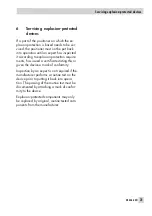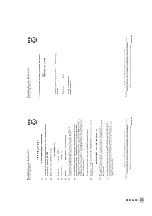
4.2.2 Spring-return actuator: valve
OPEN without supply air
Note!
For this fail-safe action, a signal pressure
that is high enough to tightly close the valve
regardless of the plant's upstream pressure
must be applied to the actuator at the upper
range value of the reference variable
(20 mA or 1 bar) for direct operating direc-
tion and at the lower range value of the ref-
erence variable (4 mA or 0.2 bar) for re-
verse operating direction.
The required signal pressure should be
approx. 1 bar above the upper bench range
value of the actuator.
Example:
With direct operating direction, the control
valve is expected to travel through a rota-
tional angle of 90° (90° cam disc must be
installed) with a reference variable of 4 to
20 mA (0.2 to 1 bar).
The valve closes when the reference variable
increases.
Starting point (zero)
20 mA (1 bar)
1. Set input signal to 20 mA using the am-
meter or set the pressure adjuster to
1 bar.
2. Turn zero adjuster (3) until the closure
member of the valve just starts to move
from its initial position.
3. Increase the input signal and slowly re-
duce it again. Check whether the closure
member starts to move at 20 mA
(1 bar).
4. Correct any deviations by turning the
zero adjuster (3).
Note on adjustment with reverse operating
direction
With reverse operating direction (Fig. 5,
bottom right), set the starting point (valve
CLOSED) to 4.5 mA (0.225 bar). The upper
range value (valve OPEN) will then be
20 mA (1 bar)
4.2.3 Double-acting actuator: valve
opens counterclockwise and
clockwise
Example:
With direct operating direction, the control
valve is expected to travel through a rota-
tional angle of 90° (90° cam disc must be
installed) with a reference variable of 4 to
20 mA (0.2 to 1 bar).
The valve opens when the reference variable
increases.
Starting point (zero)
4 mA (0.2 bar)
1. Set input signal to 4.5 mA using the am-
meter or set the pressure adjuster to
0.2 bar.
2. Turn zero adjuster (3) until the closure
member of the valve just starts to move
from its rest position.
3. Switch off the input signal and slowly in-
crease it again. Check whether the clo-
sure member starts to move at 4.5 mA
(0.225 bar).
4. Correct any deviations by turning the
zero adjuster (3).
18
EB 8386 EN
Operation – Adjustment
Содержание 3761
Страница 23: ...EB 8386 EN 23...
Страница 24: ...24 EB 8386 EN...
Страница 25: ...EB 8386 EN 25...
Страница 26: ...26 EB 8386 EN...
Страница 27: ...EB 8386 EN 27...


























